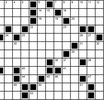
Photovoltaic "leaf" that "copies" nature!


There is a reason why leaves have a certain shape and structure in nature: they are evolutionary and functional. That's what researchers at Imperial College London thought when they came up with the idea of the PV leaf, a new photovoltaic technology inspired by the shape of leaves. Conventional panels can capture 10% to 25% of the sun's energy, turning it into electricity, but leaving most of it unused.
The problem is that, especially during hot summer days, all this excess energy tends to overheat the systems, which must be cooled by water or air flows. Therefore, in addition to the expenditure of additional energy, the efficiency of the cells itself is also affected.
Therefore, British scientists tried to rethink the architecture of the panels so that they could generate electricity, heat and clean water, while also increasing efficiency. To accomplish this feat, they sought inspiration from plants, which perform this work every day.
Thus, studying its structure and operation, scientists arrived at the invention of the "photovoltaic leaf", made of low-cost materials. The attention of researchers has turned mainly to the process of transpiration, which enables the transport of water from the roots to the tops, helping to complete photosynthesis.
In detail, the PV leaf consists of natural fibers that move water from an external reservoir to the solar cell and allow it to cover the entire surface before evaporating. The water vapor and excess heat are then captured by a collector along with the electricity produced and everything is stored in an intelligent system.
According to the researchers, the application of this innovative design in photovoltaic technology across the planet would help accelerate the global energy transition, leading to a number of concrete benefits: such as 10% more electricity produced and then the production of over 40 billion cubic meters of fresh water every year, not to mention that the new technology does not use expensive porous materials, fans, control units or pumps, thus generating significant savings in both production and waste disposal costs.
Happening now...

83 mandates are not immunity for Rama's friends
ideas

"Preliminary sentence for Belinda Balluku", response to Baton Haxhiu

Teatri që fsheh prapaskenën

Berisha's red line and the black line of democracy in the DP
top
Alfa recipes
TRENDING 
services
- POLICE129
- STREET POLICE126
- AMBULANCE112
- FIREFIGHTER128
























